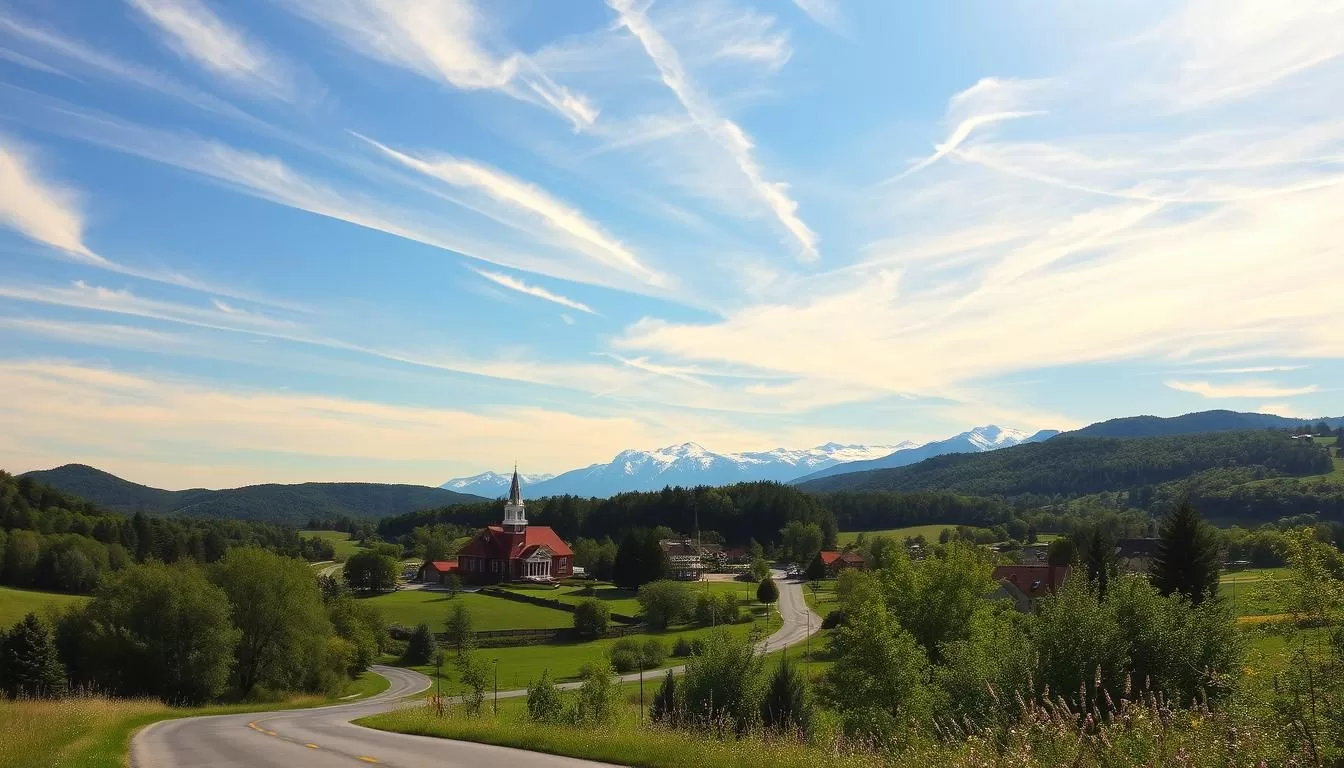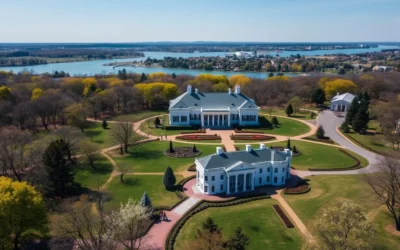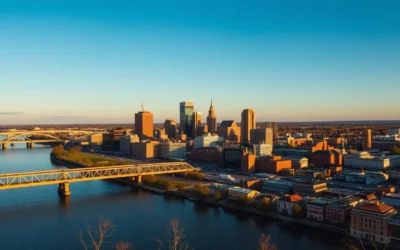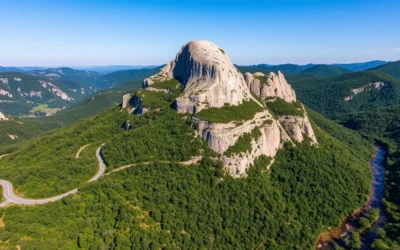Planning a trip to Virginia can be a delightful experience, given its diverse landscapes and activities. You can enjoy white sands, seaside hotels, and historic spots, or engage in various activities like hiking, kayaking, biking, fishing, golfing, and watching whales and dolphins.
To make the most of your visit, understanding the state’s climate patterns is crucial. Virginia experiences four distinct seasons, each offering different attractions and activities. The right time to visit, based on weather conditions, can significantly enhance your travel experience.
Choosing the best time to visit Virginia depends on your preferences and the activities you’re interested in. This guide will help you identify the ideal months for your trip.
Understanding Virginia’s Climate
Virginia’s climate is a complex mix of subtropical and temperate influences, shaped by its geography. The state’s diverse landscape, which includes coastal regions, mountains, and valleys, contributes to its varied climate zones.
Geographic Influences on Weather Patterns
The Atlantic Ocean and the Chesapeake Bay have a significant impact on Virginia’s climate, particularly in the eastern regions. The Appalachian Mountains, on the other hand, influence the western areas. These geographic features create distinct temperature variations across the state, with coastal areas experiencing more moderate temperatures compared to inland regions.
Temperature and Precipitation Overview
Virginia’s climate is classified as humid subtropical, characterized by hot, humid summers and relatively mild winters. The state’s precipitation is fairly evenly distributed throughout the year, though summer months typically see more rainfall, often in the form of afternoon thunderstorms. Understanding these climate patterns is essential for planning a weather-appropriate visit to Virginia’s diverse regions.
| Season | Temperature Range | Precipitation |
|---|---|---|
| Spring | Mild to warm | Moderate rainfall |
| Summer | Hot and humid | High rainfall |
| Fall | Mild | Moderate rainfall |
| Winter | Mild to cool | Low to moderate rainfall |
Spring in Virginia: March to May
Virginia’s spring season, spanning March to May, is a great time of renewal and beauty, offering a wonderful opportunity to explore the state’s outdoors. As the chill of winter dissipates, the state transforms into a vibrant landscape, full of life and color.
Temperature Ranges and Rainfall
During spring, Virginia’s weather gradually warms up, with temperatures ranging from the 40s to the 70s. March begins with cooler mornings, but by May, the warmth is more consistent, making it ideal for outdoor activities. Spring rainfall is moderate, averaging about 2-3 inches per month, which nourishes the landscape without hindering outdoor plans.
| Month | Average Temperature | Average Rainfall |
|---|---|---|
| March | 50s-60s°F | 2-3 inches |
| April | 60s-70s°F | 2-3 inches |
| May | 70s°F | 3 inches |
Cherry Blossoms and Spring Blooms
Spring in Virginia is renowned for its spectacular blooms, including cherry blossoms, dogwoods, and azaleas. These flowers create a picturesque landscape across the state, making it a great time for nature lovers and photographers. The beauty of these blooms is a significant part of Virginia’s appeal during this season.
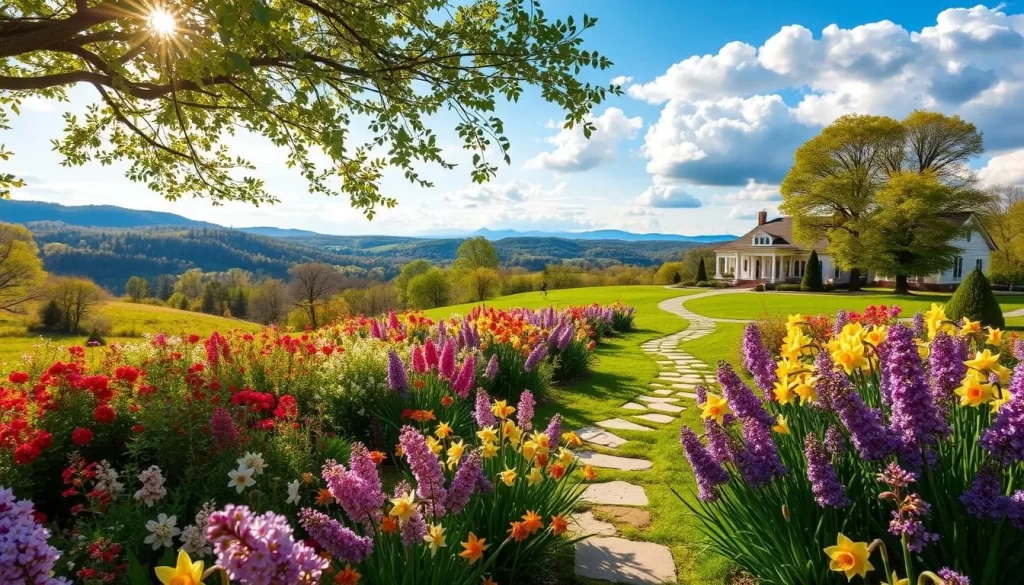
Spring Festivals and Events
The spring season is also a time for festivals and cultural events in Virginia. The National Cherry Blossom Festival is a highlight, attracting visitors from across the country. Additionally, various outdoor activities like hiking become more accessible as the weather improves, making it an ideal time to enjoy Virginia’s natural beauty.
Summer in Virginia: June to August
As summer unfolds in Virginia, the hot and humid weather sets the stage for a vibrant season of beach activities and outdoor festivals. You can expect long, warm days that are perfect for enjoying the state’s many attractions.
Heat, Humidity, and Thunderstorms
Summer in Virginia brings hot and humid conditions, with July typically being the warmest month. Temperatures often climb into the 80s and 90s Fahrenheit, accompanied by high humidity levels exceeding 70%. Afternoon thunderstorms are common, providing brief respite from the heat.
Beach Season Along the Atlantic Coast
The warm waters along Virginia’s Atlantic coast make summer the prime time for beach activities. You can enjoy swimming, surfing, and various water sports during this season. The beaches come alive with boardwalk entertainment, beach volleyball, and other activities that draw large crowds.
Summer Festivals and Outdoor Activities
Summer in Virginia is not just about the beaches; it’s also a time for numerous outdoor festivals celebrating music, food, and local culture. You can explore the state’s waterways by boating on the Chesapeake Bay or try river tubing for a fun experience. The season offers something for everyone, making it a peak tourist season.
Fall in Virginia: September to November
Virginia’s fall season is a time of harvest and celebration, with mild temperatures and stunning fall foliage. The state’s natural beauty is on full display during this period, making it an attractive time for tourists and locals alike.
Mild Temperatures and Changing Foliage
During the fall season, Virginia experiences mild weather, with temperatures typically ranging from the 50s to 70s Fahrenheit. This comfortable climate makes it ideal for outdoor activities like hiking and exploring the state’s natural landscapes. The changing foliage is a major highlight, with the fall foliage peaking in mid-October, especially in the Blue Ridge Mountains and Shenandoah National Park.
Harvest Celebrations and Fall Festivals
Fall in Virginia is also a time for festivals and celebrations. The season brings numerous harvest festivals, wine celebrations, and agricultural fairs throughout the state’s countryside and small towns. Events like the Stockley Gardens Fall Arts Festival and Virginia Fall Foliage Festival showcase the area’s farming history and natural scenery, adding to the beauty and fun of the season.
Scenic Drives Through Blue Ridge Mountains
The Blue Ridge Mountains offer breathtaking scenic drives during the fall. The Skyline Drive and Blue Ridge Parkway become popular routes, providing stunning vistas of the colorful landscapes. These drives attract photographers and nature lovers, making the fall season a great time to experience Virginia’s natural beauty.
Winter in Virginia: December to February
Virginia’s winter season, spanning from December to February, offers a unique blend of holiday celebrations and outdoor activities. You will find that the state’s mild climate makes it an attractive destination during this time.
Temperature Ranges and Snowfall
During the winter months, temperatures in Virginia range from the 30s to 40s Fahrenheit. Weather conditions vary across the state, with coastal areas receiving minimal snow while mountainous regions experience substantial snowfall, making them perfect for winter sports.
| Region | Average Temperature | Snowfall |
|---|---|---|
| Coastal Areas | 40s Fahrenheit | Minimal |
| Mountainous Regions | 30s Fahrenheit | Substantial |
Holiday Celebrations and Winter Activities
The city of Norfolk, for example, turns into a charming place during winters, with its historic and waterfront areas decorated with lights and holiday decorations. You can enjoy various fun activities, such as visiting museums, restaurants, and historic sites, or participating in activities like skiing and snowboarding at resorts in western Virginia.
Virginia, United States: Best Months for a Weather-Savvy Trip
For a weather-savvy trip to Virginia, identifying the best months is key to enjoying the state’s attractions.
Virginia’s climate varies significantly across different seasons, making some months more favorable for a visit than others. The state’s shoulder seasons, spring and fall, are particularly noteworthy for their pleasant weather conditions.
Spring and Fall: The Ideal Shoulder Seasons
The spring season, which spans from April to May, and the fall season, from September to October, are considered ideal for a trip to Virginia. During these periods, the temperatures are mild, ranging from the 60s to 70s Fahrenheit, making them perfect for outdoor activities. The mild weather, coupled with fewer crowds, enhances the overall experience. In the spring, you can enjoy blooming landscapes, while fall offers spectacular foliage and harvest-themed attractions.
Balancing Weather, Crowds, and Costs
Visiting Virginia during the spring and fall shoulder seasons allows you to strike a balance between enjoying pleasant weather, avoiding large crowds, and managing costs. Hotel rates and attraction prices tend to be lower during these periods compared to the peak summer season. For those interested in beach activities, late May and early September provide warm enough temperatures for swimming without the intense summer crowds. Additionally, these periods coincide with some of Virginia’s most celebrated events and festivals, giving visitors extra reasons to plan their trips during these times.
- The ideal months for a weather-savvy trip are April to May and September to October.
- These shoulder seasons offer a balance of pleasant weather, fewer crowds, and lower accommodation rates.
- Spring and fall feature clear, sunny days with moderate temperatures, ideal for exploring attractions.
- Visiting during these months allows you to experience Virginia’s natural beauty without extreme weather conditions.
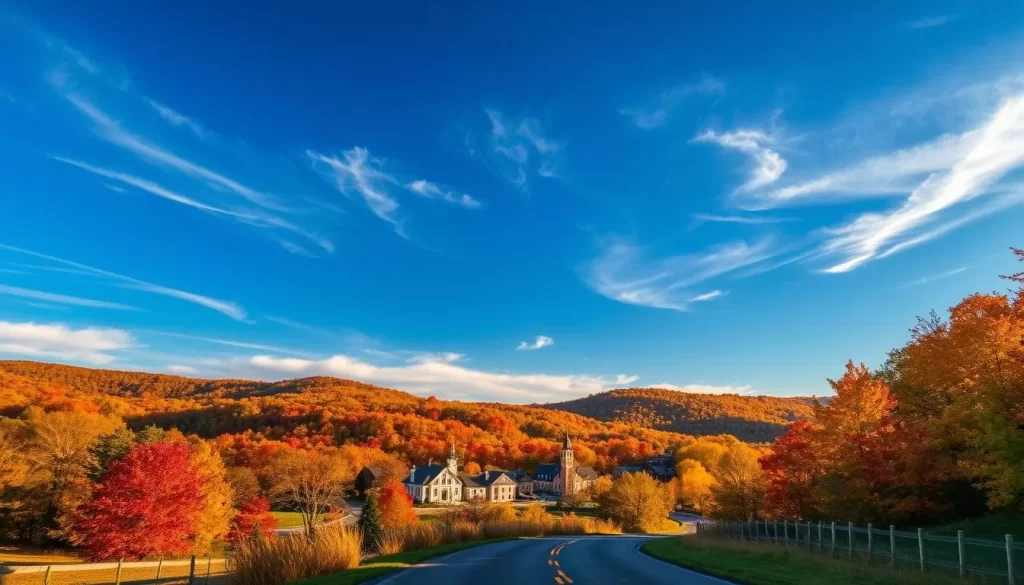
Regional Weather Variations Across Virginia
From the Atlantic coast to the Blue Ridge Mountains, Virginia’s climate varies greatly across different regions. You will notice a significant difference in weather conditions as you travel across the state.
Coastal Virginia vs. Mountain Regions
The coastal regions of Virginia, including Virginia Beach, tend to have milder temperatures year-round due to the moderating influence of the Atlantic Ocean and the Chesapeake Bay. In contrast, the mountain regions, such as the Shenandoah Valley, experience cooler temperatures, with more significant snowfall in winter and earlier fall foliage. The temperature difference between these regions can be as much as 10-15 degrees Fahrenheit on any given day.
Chesapeake Bay and Its Weather Influence
The Chesapeake Bay acts as a natural climate moderator for eastern Virginia, creating a microclimate that results in slightly warmer winters and cooler summers compared to areas just a few miles inland. This unique weather pattern makes the regions around the Chesapeake Bay a pleasant place to visit during various seasons. Understanding these regional variations in weather and climate is crucial when planning a trip to different parts of Virginia, ensuring that you make the most of your visit to this diverse state.
Outdoor Adventures by Season
Virginia’s diverse landscape offers a wide range of outdoor adventures that cater to different interests and preferences throughout the year. Whether you’re a nature lover, an adventure seeker, or simply someone who enjoys spending time outdoors, Virginia has something for everyone.
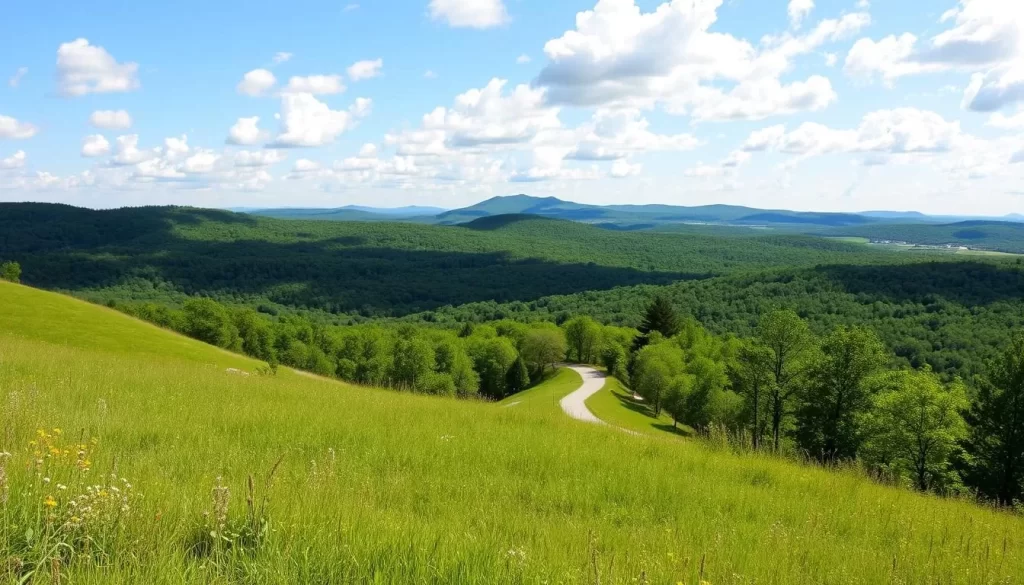
Spring: Hiking and Nature Walks
Spring is an ideal time for hiking and nature walks in Virginia. With mild temperatures and blooming wildflowers, the state’s numerous trails become particularly rewarding. Popular spots include Virginia’s state parks and sections of the Appalachian Trail, where waterfalls are flowing strongly before the summer heat arrives.
Summer: Water Sports and Beach Activities
Summer is prime time for water sports and beach activities along Virginia’s coastline and numerous lakes and rivers. You can enjoy swimming, kayaking, paddleboarding, or sailing on the Chesapeake Bay. The Atlantic coast is also a great spot for surfing.
Fall: Leaf-Peeping and Harvest Activities
Fall brings spectacular foliage viewing opportunities, particularly along Skyline Drive and the Blue Ridge Parkway. “Leaf-peeping” becomes a favorite pastime as the leaves change colors. Additionally, harvest activities like apple picking, vineyard tours, and farm festivals provide authentic Virginia experiences.
Each season in Virginia offers a unique set of outdoor adventures, making it a great destination for outdoor enthusiasts. Whether you’re looking for hiking, water sports, or simply enjoying the fall foliage, Virginia has a wealth of activities to enjoy.
Indoor Attractions for Rainy Days
Rainy days in Virginia don’t have to dampen your plans, thanks to its numerous indoor activities. Whether you’re a history buff, an art lover, or a foodie, Virginia has something for everyone on a rainy day.
Museums and Historical Sites
Virginia is home to a plethora of museums and historical sites that are perfect for exploring on a rainy day. You can visit the Virginia Museum of Fine Arts in Richmond, which boasts an impressive collection of art from around the world. In Norfolk, the Chrysler Museum of Art is another must-visit, with its extensive collection of American and European art. For those interested in history, Colonial Williamsburg, Monticello, and Mount Vernon offer extensive indoor tours that bring Virginia’s rich history to life.
| Museum/Historical Site | Location | Focus |
|---|---|---|
| Virginia Museum of Fine Arts | Richmond | Art from around the world |
| Chrysler Museum of Art | Norfolk | American and European Art |
| Colonial Williamsburg | Williamsburg | Colonial American History |
Shopping and Culinary Experiences
On a rainy day, you can indulge in Virginia’s thriving culinary scene or go shopping. From upscale malls to charming boutiques in historic districts, there’s no shortage of shopping opportunities. You can also explore the state’s growing reputation for fine wines and craft beverages by visiting wineries and breweries. For a taste of traditional Southern cuisine, historic taverns are a great place to visit.
Weather-Savvy Packing Tips
To enjoy Virginia to the fullest, understanding the state’s weather patterns and packing accordingly is key. The right clothing can make a significant difference in your travel experience.
Seasonal Essentials
Packing for Virginia’s seasons requires versatility. For spring and fall visits, include layers for temperature fluctuations, such as light jackets, long and short-sleeved shirts, and comfortable walking shoes. In summer, prepare for hot, humid conditions with lightweight, breathable clothing and sun protection. For winter, pack warm layers, including a medium-weight coat, gloves, and waterproof footwear.

Layering Strategies for Variable Weather
Regardless of the time of year you visit, layering is crucial. This way, you can adjust your clothing to accommodate changing temperatures throughout the day. Don’t forget rain gear, as precipitation can occur in any season. By packing things that can be layered, you’ll be prepared for any weather condition, making your trip more enjoyable every way.
Planning Your Visit Around Weather Events
Knowing what to expect from Virginia’s weather can help you prepare for a successful trip. Understanding the state’s weather patterns and potential weather events is crucial for planning a trouble-free visit.
Hurricane Season Considerations
Hurricane season in Virginia runs from June to November, with the peak period typically occurring from mid-August through September. While direct hurricane hits are relatively rare, tropical storm systems can bring heavy rain and wind to coastal areas, potentially disrupting beach vacations.
- Be aware of the hurricane season when planning your visit during late summer and early fall.
- Check long-range forecasts about 2-3 weeks before your trip to prepare appropriately.
Special Weather Phenomena in Virginia
Virginia experiences various weather phenomena, including fog in mountain valleys and sea breezes along the coast. These conditions can impact your travel plans, so it’s essential to be aware of them.
Conclusion
The Old Dominion State is a treasure trove of experiences, with each season bringing its unique charm. Virginia offers visitors a remarkable diversity of experiences throughout the year. You can enjoy the sandy beaches, outdoor activities, cultural sites, and tasty food, making it a perfect destination for various interests.
By considering the weather and seasonal events, you can pick the best time to visit and have an amazing vacation. The spring and fall shoulder seasons are ideal for a weather-savvy trip, with mild temperatures and comfortable conditions for most activities. In contrast, summer months are perfect for beach activities and water sports, while winter offers a serene landscape and holiday celebrations.
Whatever time of year you choose to visit, Virginia’s rich history, natural beauty, and southern hospitality ensure a memorable experience in this diverse and welcoming state.
The above is subject to change.
Check back often to TRAVEL.COM for the latest travel tips and deals.
Here are some Tours & Sightseeing suggestions that might pique your interests!
